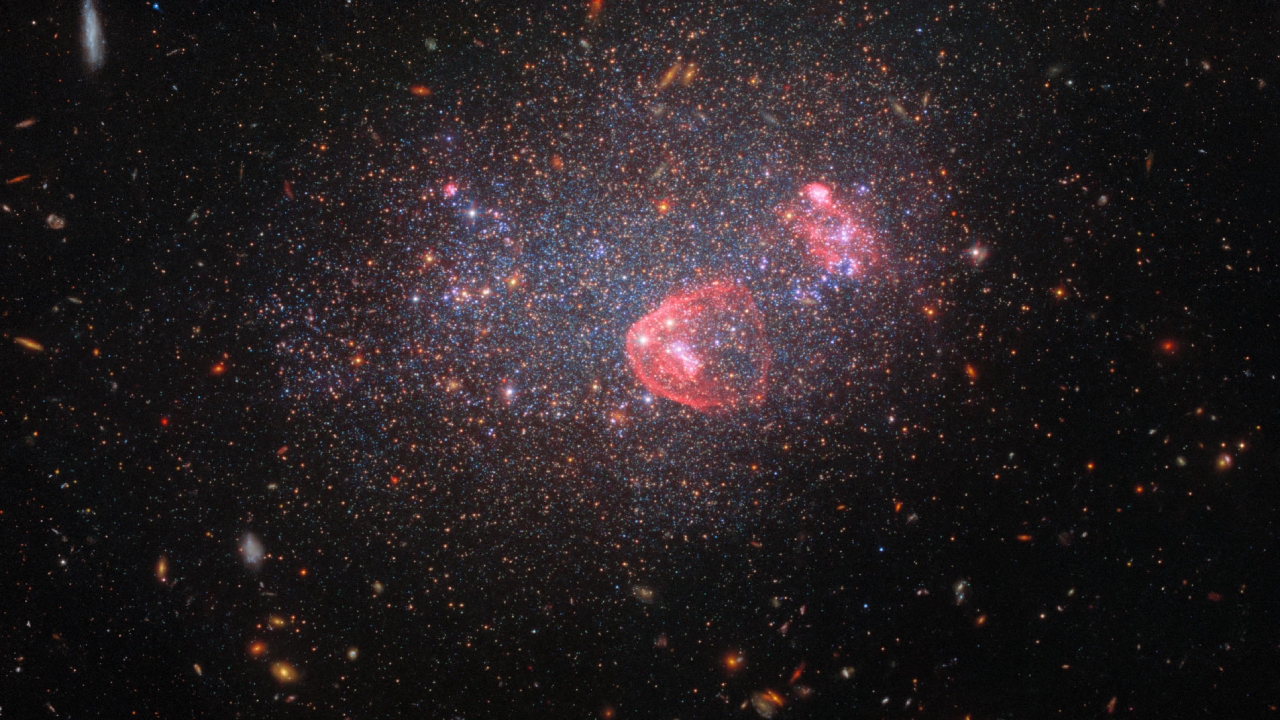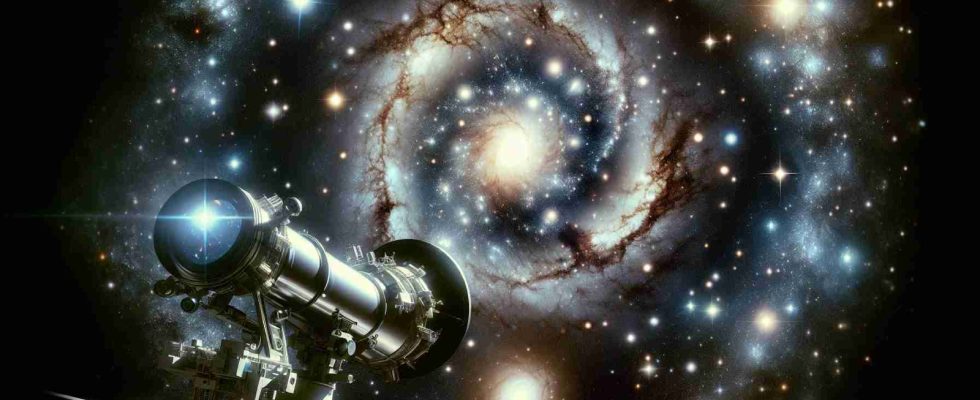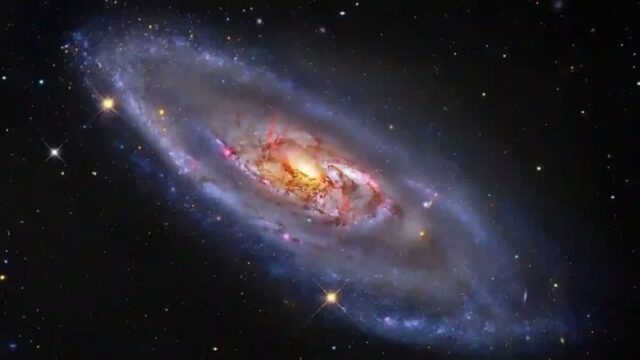Hubble Space Telescope Researchers usingUGC 8091 imaged the irregular dwarf galaxy called. in the constellation Virgo 7 million light years This region, located at a distance, is a star formation bed containing bright young stars. The stars illuminate the gas around them, creating a sparkling mass reminiscent of Christmas lights.
Hubble imaged the galaxy UGC 8091
It is called an irregular galaxy because of its irregular shape, and a dwarf galaxy because of its small size. Unlike spiral galaxies, such as the Milky Way, or elliptical galaxies, which have a smooth and elliptical shape, irregular galaxies can have a variety of shapes. Often these galaxies have taken on strange shapes due to gravitational forces, such as when two galaxies approach each other and interact.

This particular image was captured using two of Hubble’s cameras, the Wide Field Camera 3 and the Advanced Camera for Surveys, combining data taken over many years. Hubble’s instruments look primarily at wavelengths of visible light, like the human eye. But they can also look at a small fraction of ultraviolet and infrared wavelengths.
Astronomers who want to investigate objects in the infrared part of the spectrum now have the option of using the James Webb Space Telescope, which has three instruments operating in the near infrared and one operating in the mid-infrared. But Hubble remains one of astronomy’s leading instruments for visible light observations.
Over its 30 years, Hubble has experienced various hardware failures, including a recent issue with one of its gyroscopes malfunctioning. But Hubble continues to work and provide data for projects like this, scientists say.
The main purpose of this project was to try to investigate the role of dwarf galaxies in reheating the hydrogen that cooled as the universe expanded after the Big Bang billions of years ago. The Hubble Space Telescope fascinates people aesthetically with such images captured during scientific research.
So what do you think about this news? You can share your thoughts with us in the comments section.

